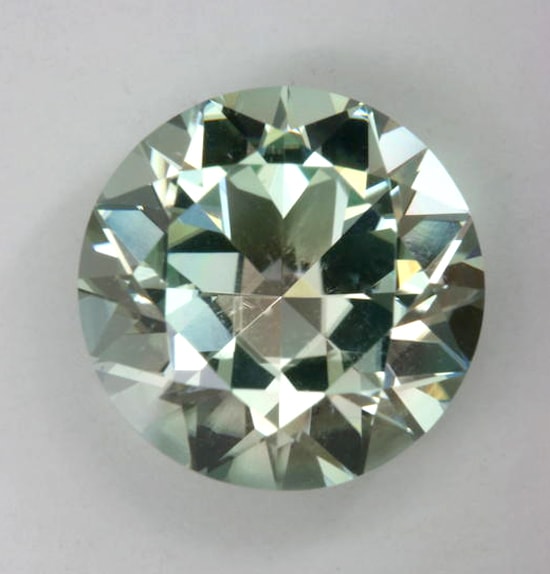I have taken to visiting youtube in the last year or so because I get to see what many people see about tourmaline and gems in general. It also gives me ideas for posts on this website. The following story of cutting a piece of tourmaline starts with a less than an ideal piece of rough. It is not an extreme case or an example of what the “experts”, with videos on selecting rough on the youtube, would forbid you from buying. But it is an example of the effort it takes to obtain a good yield with appropriate angles from available rough. If I had waited to find “ideal” rough, as the experts suggest on youtube, to cut my collection, it would be greatly restricted and probably not affordably.
I purchased the rough for this story, sight unseen, from my principle supplier of many years. It is late 2020 and interesting tourmaline rough is both expensive and hard to locate. The rough piece had been extensively cobbled with indications of sawing on one side. The result of all this effort was a grayish blue rectangular shaped staircase of about seven carats with a limited amount of worn alluvial surface. The tourmaline was not dichroic in the least so I was free from any concerns about a dark c axis.
My first idea was to cut an emerald cut with the table in the plane of the steps in the staircase. I passed that one by when I realized how much of the depth/weight was under the top stair and how thin the lowest step area was. As I rotated the piece, I realized that I would have to start at the beginning and remove what can not be used. Now I am not concern with how much time it will take to cut the gem on the machine. I preform to help center the rough and in choosing the shape of the finished gem. Since grinding down the thinner part of the staircase both centered the deepest part of the rough under the nascent culet and verify the flawless quality of the rough I started there. The with a good grip on the stone I ground the nascent table, keeping it perpendicular to the sides of the staircase shaped rough.
The most critical part of preforming the rough was getting the thickest part of the rough under the center of the nascent table. A secondary concern, but still important, is having enough material above a good girdle to have a reasonable crown. As I ground down the thin end of the flatten steps, I went from a squarish emerald cut, to a long ratio oval that progressively grew shorter, to a round. I did some measuring, but mostly I eyeballed the rough into an oval with a ratio of 1.25. It was a very close call between a round and the oval. The round would have good optics, have plenty of material and be quick to cut, The oval is a challenge to cut well and would be a tight fit.
I made the cutting of the oval more reasonable, by adjusting the indexes to fit the shape of the preform rather than redopping the stone. I can also adjust the center of the gem if it is needed to keep the apparent thickness of the crown the same around the preform while using the correct angles. I have been rotating the cutting of emerald cuts for sometime, but not ovals. The nolelty of cutting ovals with different indexes lead to recutting the pavilion three times. Each rect was done with care to conserve the depth of the gemstone. My index problems were compounded by slippage with my radial cheater. Adjusting for all these challenges lead to a very well cut oval that polished brilliantly.
So another beautiful gemstone is ready for the collection, I got about a 30 percent yield that no commercial cutter would push for since it is not worth the effort. The ultimate consumer does not care about my good yield, but it pleases me. My eyeballs are ready for another “look a lot and cut a little” piece of tourmaline rough.

